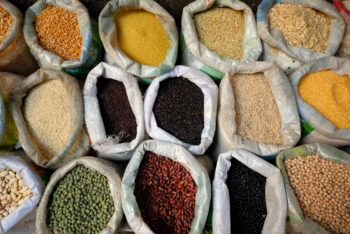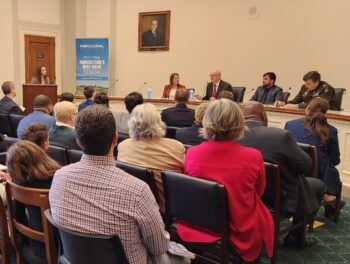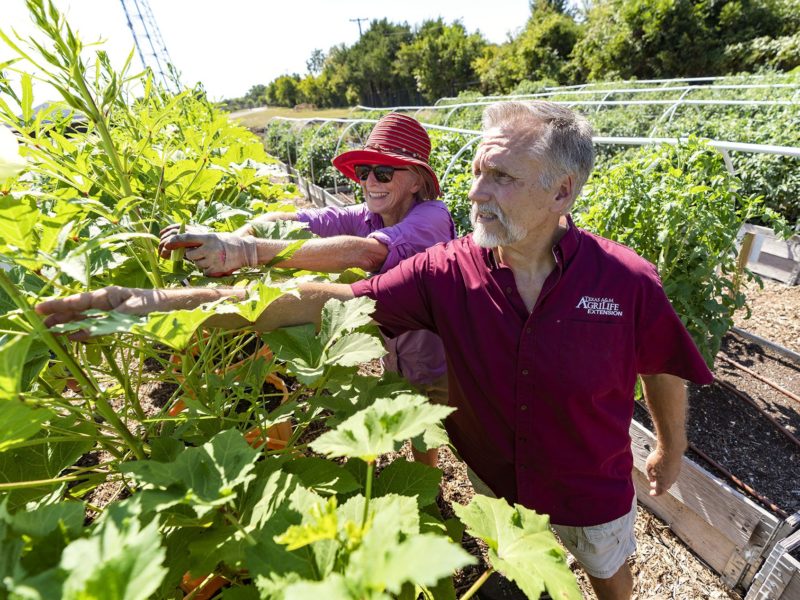Global Hunger, Malnutrition A Threat To U.S. National Security

The world is teetering on the edge of a global hunger and malnutrition crisis that poses a significant threat to U.S. national security, according to a new report from the Program on Conflict and Development in the Department of Agricultural Economics of Texas A&M’s College of Agriculture and Life Sciences.
The report, “Global Food Security is National Security,” was commissioned by the Farm Journal Foundation and authored by Dr. Edwin Price, Howard G. Buffett Endowed Chair on Conflict and Development, along with program consultant Dr. Naureen Fatema, and research specialist Abdul Saboor Rahmany — all with the Program on Conflict and Development.
The report demonstrates how global food insecurity is linked to numerous geopolitical risks and suggests how greater investment in agricultural development and innovation, especially in developing countries, can mitigate these risks.
“In the report, we categorize the risks as social and political threats, economic threats, nutrition and health threats, environmental threats and cultural threats,” Price said. “Some of these threats include radicalization, terrorist, environmental degradation and lost economic opportunity, as well as the potential for corruption, extremism and social unrest. We determine that greater investment in agriculture would help reduce risks by enabling developing countries to improve their crop and animal production in order to better feed themselves.”
The Importance Of Addressing Hunger
He said as agriculture is the primary profession of the world’s poorest people, investments toward improving farm productivity in developing countries would go a long way toward addressing the root causes of many of these national security risks.
“Alleviating hunger and improving agricultural livelihoods means that people are less likely to immigrate, turn toward criminal activity or fall prey to radicalized groups,” Price said.

He noted that in the past few years Americans have felt the impact of food shortages and rising food costs due to the COVID-19 pandemic, widespread drought and other factors, opening their eyes to some of the challenges and stresses related to food insecurity.
“There has been an alarming rise in hunger and malnutrition throughout the world in recent years due to the pandemic, the war in Ukraine and a variety of extreme weather events linked to climate change,” Price said “Currently, as many as 828 million people, or one in every 10 people on the planet, is affected by hunger.”
Long-Term Investment In Agriculture
The report also gives recommendations on how the U.S. can invest in worldwide long-term agricultural development, including:
— Increasing investments in global food and nutrition security programs, as well as research and innovation.
— Expanding and strengthening knowledge-sharing and peer-support programs in agriculture for developing countries.
— Encouraging more students and young scientists to focus their research and engagement on improving global food security.
— Supporting research into the effectiveness of different agricultural technologies and production systems under conflict dynamics in socio-politically fragile environments.
“Direct food aid has increased dramatically in recent years and remains an important short-term solution to crises,” Price said. “However, investments in agricultural development assistance have stagnated at less than 15% of the value of emergency assistance. We need to increase our attention to long-term solutions.”
He said the report shows that to truly address the root causes of hunger and poverty, the U.S. should make investments in various forms of long-term capital in developing countries.
“These would include human, technological and institutional capital, as well as natural, physical, financial and cultural capital,” Price said. “And U.S. development programs should also consider the individual needs of different developing countries and tailor such investments accordingly.”
This article by Paul Schattenberg originally appeared on AgriLife Today.





